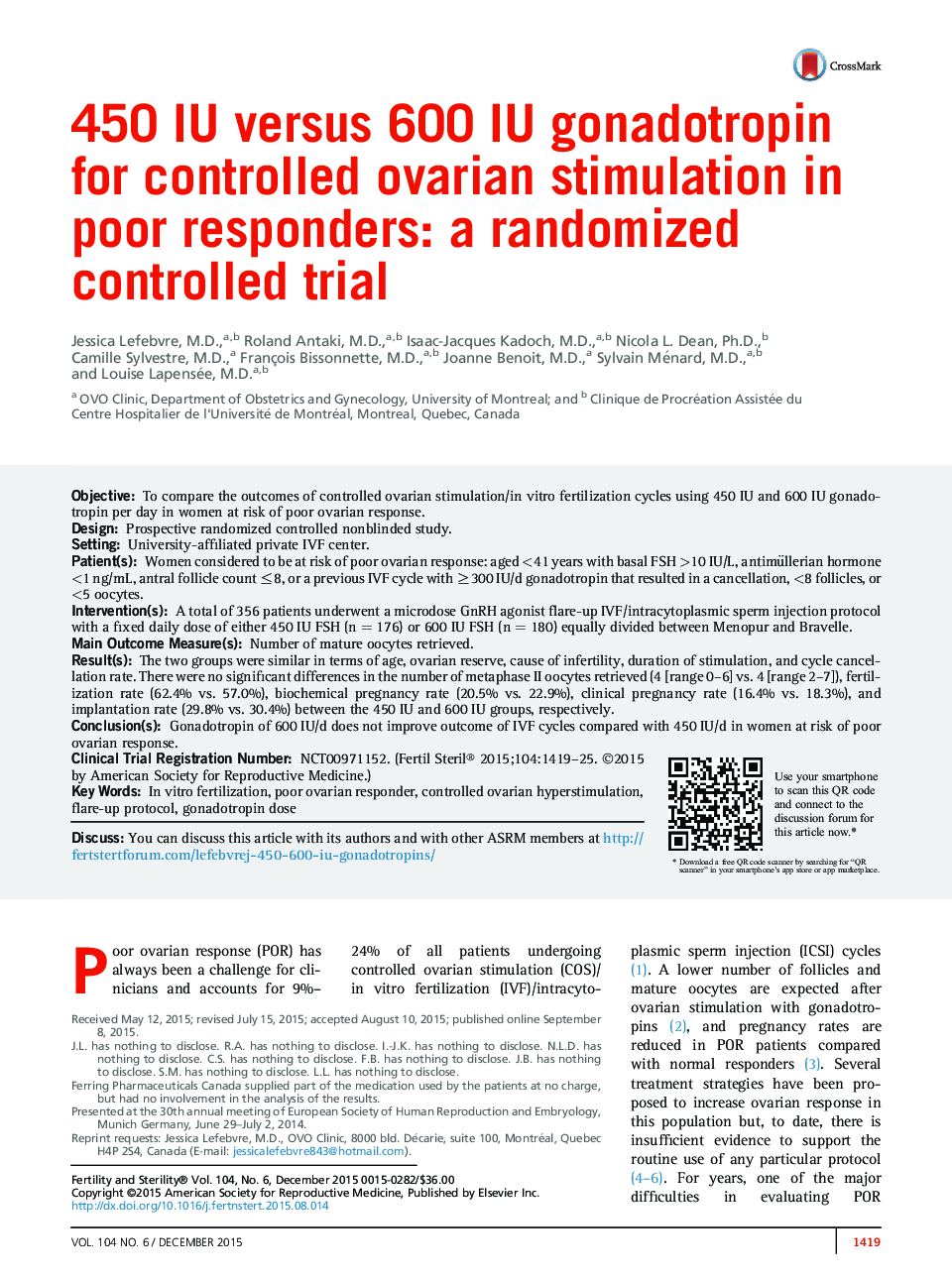| Article ID | Journal | Published Year | Pages | File Type |
|---|---|---|---|---|
| 6180911 | Fertility and Sterility | 2015 | 7 Pages |
ObjectiveTo compare the outcomes of controlled ovarian stimulation/in vitro fertilization cycles using 450 IU and 600 IU gonadotropin per day in women at risk of poor ovarian response.DesignProspective randomized controlled nonblinded study.SettingUniversity-affiliated private IVF center.Patient(s)Women considered to be at risk of poor ovarian response: aged <41 years with basal FSH >10 IU/L, antimüllerian hormone <1 ng/mL, antral follicle count â¤8, or a previous IVF cycle with â¥300 IU/d gonadotropin that resulted in a cancellation, <8 follicles, or <5 oocytes.Intervention(s)A total of 356 patients underwent a microdose GnRH agonist flare-up IVF/intracytoplasmic sperm injection protocol with a fixed daily dose of either 450 IU FSH (n = 176) or 600 IU FSH (n = 180) equally divided between Menopur and Bravelle.Main Outcome Measure(s)Number of mature oocytes retrieved.Result(s)The two groups were similar in terms of age, ovarian reserve, cause of infertility, duration of stimulation, and cycle cancellation rate. There were no significant differences in the number of metaphase II oocytes retrieved (4 [range 0-6] vs. 4 [range 2-7]), fertilization rate (62.4% vs. 57.0%), biochemical pregnancy rate (20.5% vs. 22.9%), clinical pregnancy rate (16.4% vs. 18.3%), and implantation rate (29.8% vs. 30.4%) between the 450 IU and 600 IU groups, respectively.Conclusion(s)Gonadotropin of 600 IU/d does not improve outcome of IVF cycles compared with 450 IU/d in women at risk of poor ovarian response.Clinical Trial Registration NumberNCT00971152.
